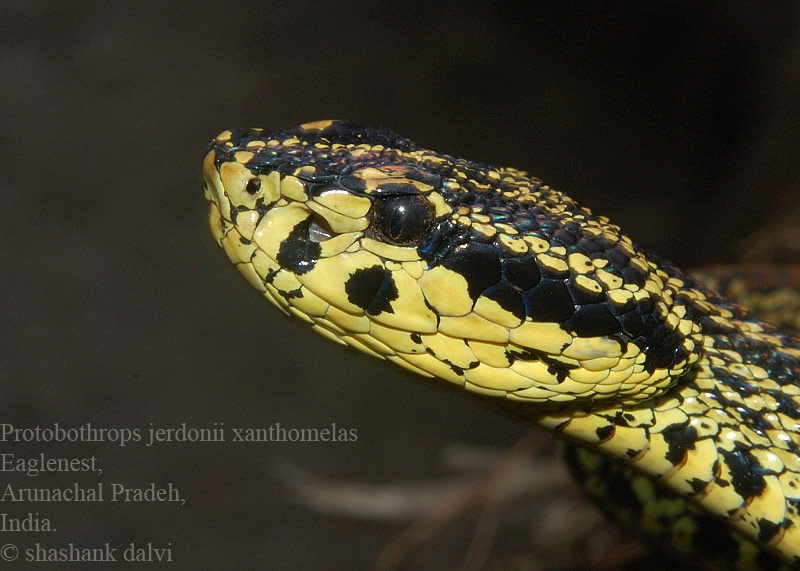While conducting a herpetofaunal survey of Eaglenest Wildlife Sanctuary, West Kameng district, Arunachal Pradesh, India, during 2006-2008, four Indian researchers reported the first record of the Jerdon’s Red Spotted Pit viper (Protobothrops jerdoni xanthomelas). Eaglenest Wildlife Sanctuary has become famous for a string of discoveries, re-discoveries and range extensions.
This venomous sub-species of Jerdon’s Pit viper is an addition to the 278 plus species of snakes documented in the country. With the addition of this species, the number of pit vipers found in India has risen to over 21 species.
The earlier records of this snake are from central and southern China, from Henan, Shaanxi, Gansu, Sichuan, Guizhou, Hubei and Guangxi Provinces. The current range record of this subspecies from Lama Camp (West Kameng district, Arunachal Pradesh, India) is a range extension of approximately 1,200 km southwest from Sichuan in China – the nearest area where the Jerdon’s Red Spotted Pit viper (P.j. xanthomelas) has been reported.
Four individuals of this snake were found by the team that included Amod Zambre from Pune, Chintan Sheth from Bangalore, Shashank Dalvi from Mumbai and Nirmal Kulkarni from Goa. All the individuals were found at 2,350 meters above sea level.
Pit vipers are highly evolved venomous snakes belonging to the sub family Crotalinae that have deep pit, or fossa, in the loreal area between the eye and the nostril on either side of the head. These loreal pits are the external openings to a pair of extremely sensitive infrared detecting organs, which in effect give the snakes a sixth sense that helps them to find and perhaps even judge the size of the small warm-blooded prey on which they feed.
The Journal of Bombay Natural History Society, Mumbai, has accepted the research paper concerning this important find.


 CI is a non-profit, non-commercial portal that aims to facilitate wildlife and nature conservation by providing reliable information and the tools needed to campaign effectively.
CI is a non-profit, non-commercial portal that aims to facilitate wildlife and nature conservation by providing reliable information and the tools needed to campaign effectively.